“What is Digital Commerce?” is the question that dominates the minds of many entrepreneurs, business owners, and consumers. The rise of e-commerce has changed the way we shop, sell, and conduct business. Here, we’ll discover the concept of digital commerce, explore what it is, its different aspects, and why it is an essential component of modern business strategies.
What is Digital Commerce?
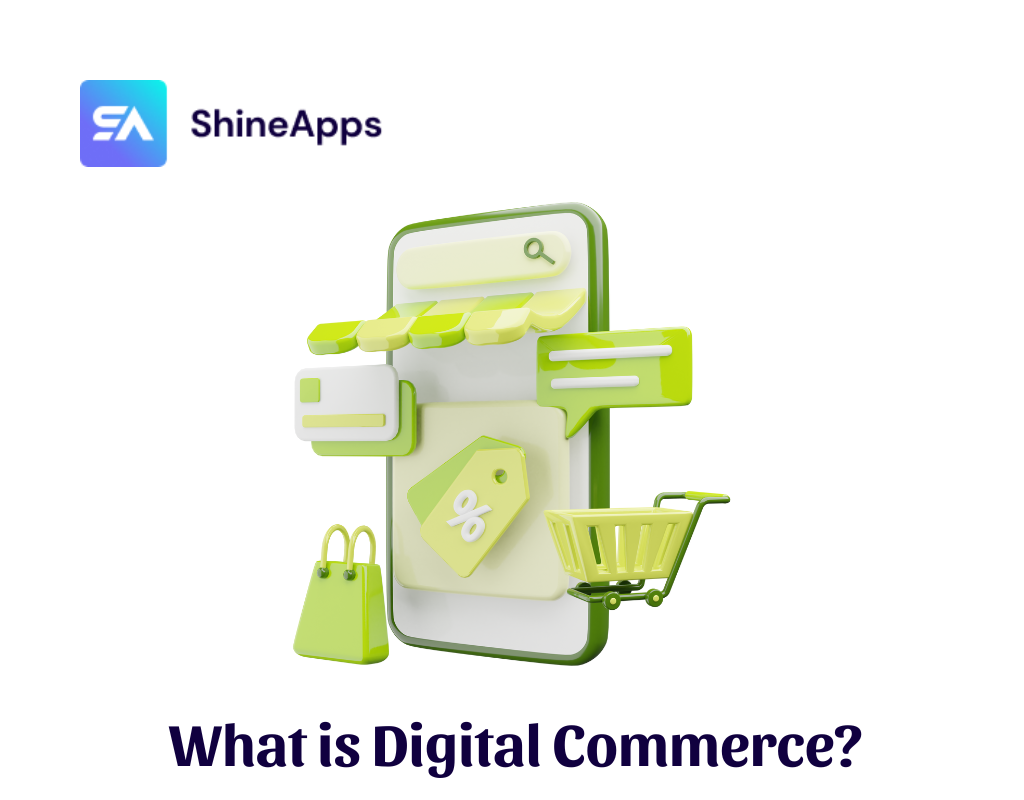
Digital commerce encompasses the buying and selling of goods and services using electronic channels, primarily the Internet. This broad category includes a multitude of online transactions, from purchasing physical products through online stores to subscribing to digital services or downloading software. Essentially, digital commerce bridges the gap between businesses and their customers in the online realm.
Aspects of Digital Commerce
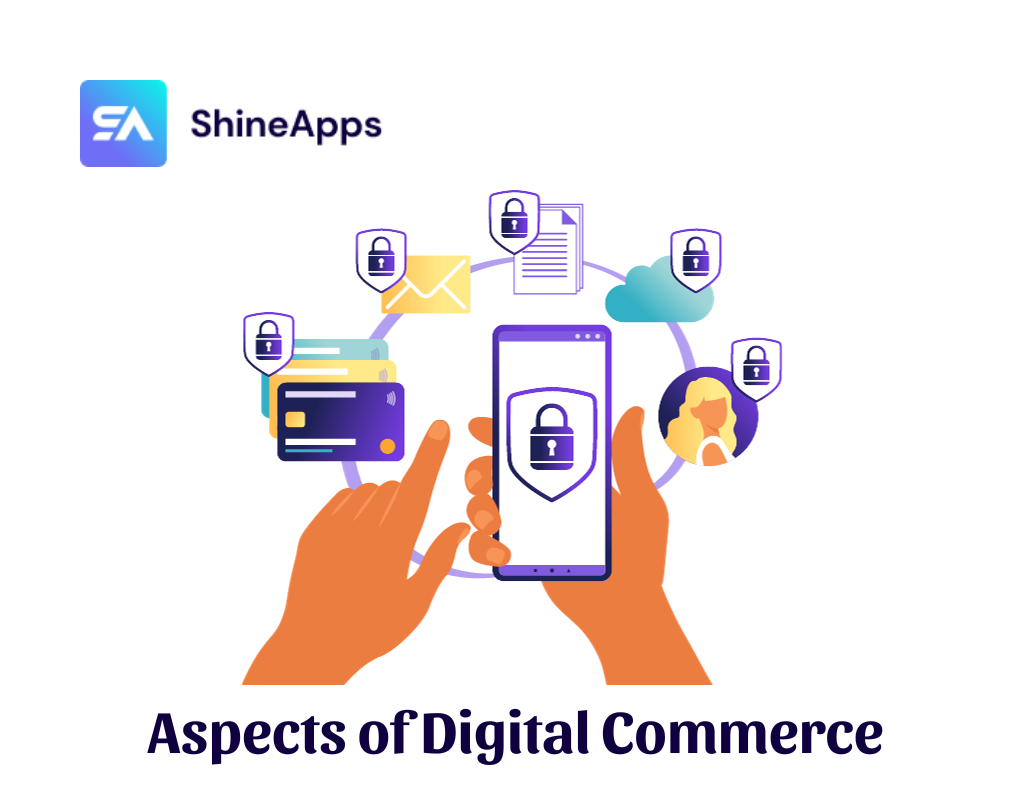
In digital commerce, all elements of the purchase decision process are crucial, and a comprehensive approach is essential for a seamless user experience. Digital strategists meticulously map the entire consumer journey, assigning importance to each purchase milestone. Key aspects of digital commerce encompass:
- Content Marketing: Engaging content is vital for informing and attracting consumers throughout their journey.
- Product Descriptions, Images, and Media: Accurate and appealing product information, images, and multimedia assets help customers make informed purchasing decisions.
- Marketing and Promotional Campaigns: Effective marketing, including promotional campaigns and social media engagement, drives awareness and interest.
- Analytics: Data-driven insights enable businesses to make informed decisions, refine strategies, and understand consumer behavior.
- User Experience Mapping: Creating a user-friendly and intuitive interface is crucial for a positive customer experience.
- Customer Service: Quality customer support ensures that customers have a positive experience and can resolve any issues they encounter.
- Order Fulfillment and Supply Chain Management: Efficient management of orders and supply chains is essential to ensure timely and accurate order fulfillment.
Differences Between Ecommerce and Digital Commerce
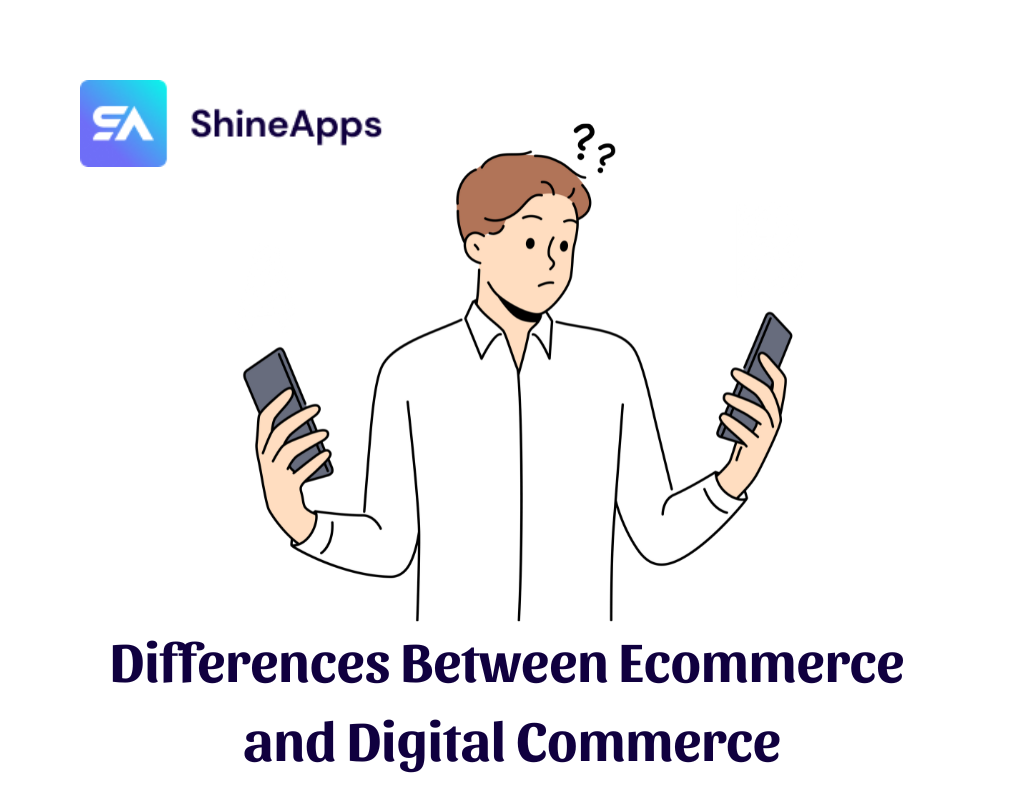
While ecommerce and digital commerce are related, they have some fundamental differences:
- Scope: Ecommerce is primarily concerned with online buying and selling, whereas digital commerce encompasses the entire consumer journey, from research to post-purchase support.
- Channels: Ecommerce is typically limited to online stores and marketplaces, whereas digital commerce includes a broader range of digital touchpoints, such as social media, mobile apps, chatbots, and more.
- Focus: Ecommerce focuses on facilitating online transactions, making it easy for customers to find and buy products. In contrast, digital commerce emphasizes providing a seamless customer experience across all digital touchpoints.
- Strategy: Ecommerce is a method for online product sales, while digital commerce is a strategic approach that utilizes digital technologies to deliver a comprehensive and integrated customer experience.
- Optimization: Ecommerce platforms are optimized for online transactions, while digital commerce requires optimization for various aspects of digital engagement, including SEO, user experience (UX), mobile responsiveness, and more.
How Does Digital Commerce Work?
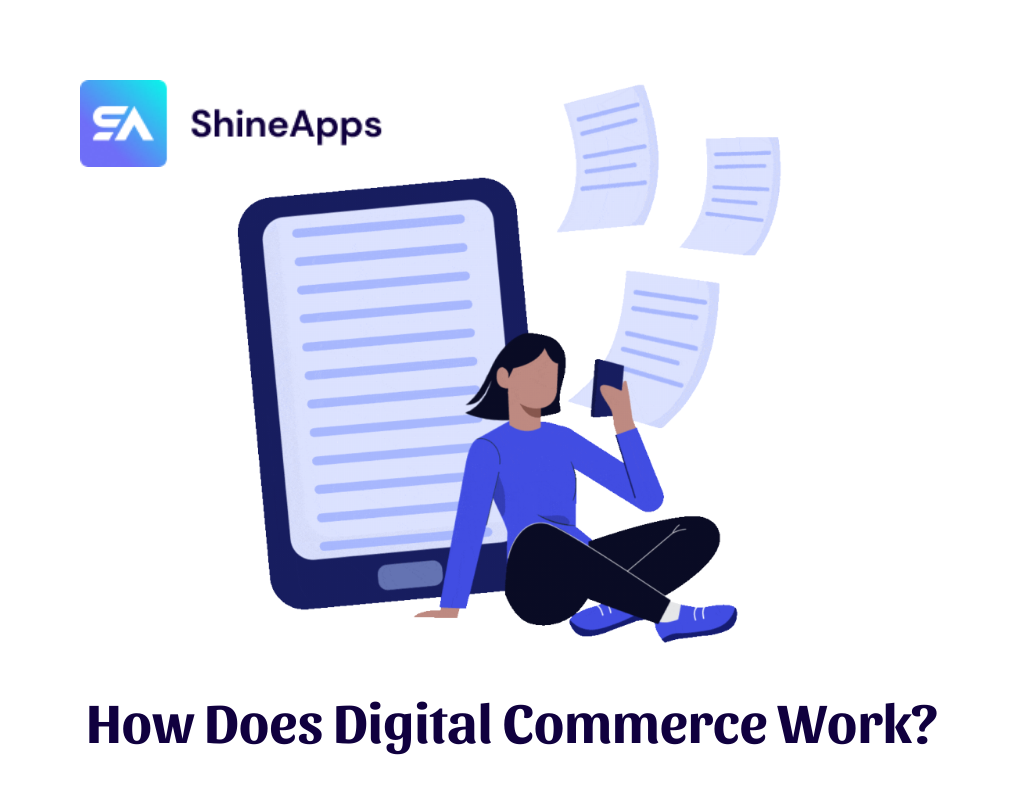
Digital commerce is a dynamic process that begins with a customer’s first online encounter with a brand or product. Whether through social media ads, search engine results, or retail aggregators, these initial touchpoints set the stage for a personalized shopping experience.
For instance, on a platform like Amazon, complex algorithms tailor search results for each customer, ensuring that the displayed items are influenced by individual behavior, geographic location, and other variables. This means that search results can vary significantly from one customer to the next.
Furthermore, every purchase made in digital commerce serves as valuable data. These data points inform marketing strategies, website presentation, and even customer support handling. Analytics play a crucial role in continuously refining how products are advertised and the overall online shopping experience.
Thus, digital commerce is less about the mere transaction of goods from point A to point B and more about the collection and strategic use of customer data to continually optimize and personalize the digital shopping journey.
Benefits of Digital Commerce
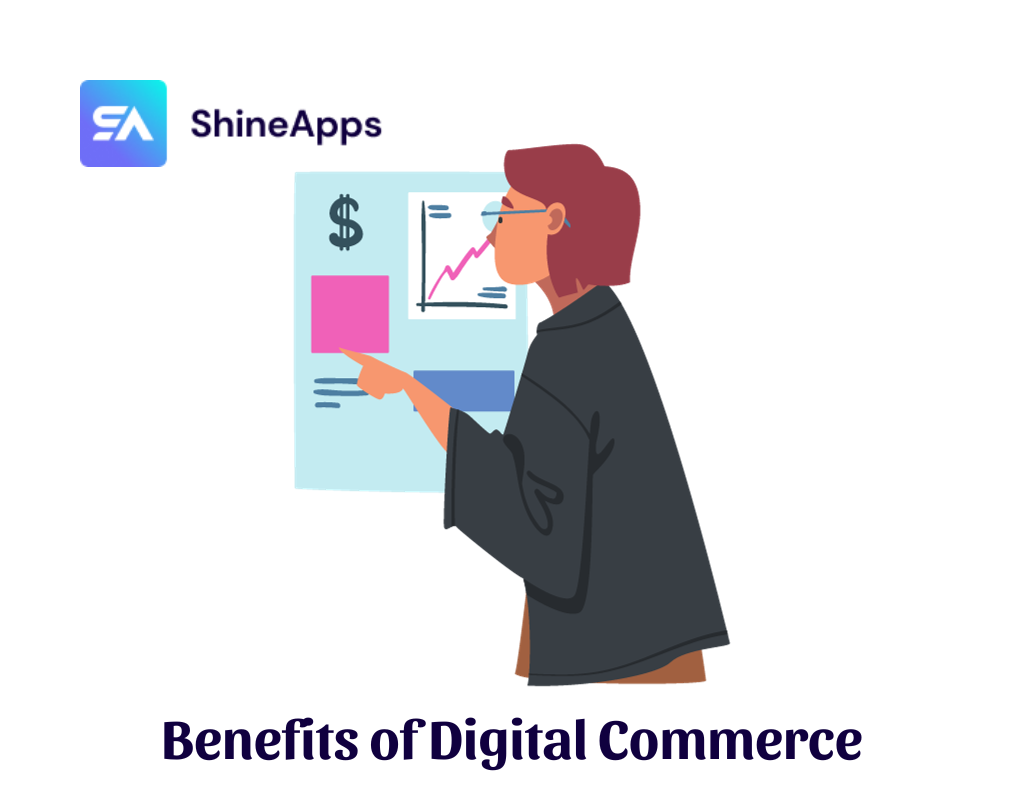
The importance of digital commerce is profound and multifaceted. Let’s delve deeper into why it matters:
Global Reach
Digital commerce transcends geographical limitations, providing businesses with the opportunity to tap into a worldwide customer base. This global reach is particularly crucial in today’s interconnected world, where businesses can serve customers on a global scale without the need for a physical presence in every region.
Convenience
One of the cornerstones of digital commerce is convenience. Customers can browse and shop around the clock from anywhere with an internet connection.
They have the flexibility to explore product options, compare prices, and read reviews, all from the comfort of their homes. This level of accessibility and ease enhances the overall customer experience.
Cost Efficiency
Operating an online store often involves lower overhead costs compared to traditional brick-and-mortar establishments. There’s no need for physical retail space, which translates into savings on rent, utilities, and in-store staff. This cost efficiency can be a game-changer for businesses, allowing them to allocate resources more effectively.
Data Insights
Digital commerce generates a wealth of data. Businesses can gain valuable insights into customer behavior, preferences, and emerging trends.
This data-driven approach empowers companies to make informed decisions, refine their strategies, and customize their offerings to better meet customer needs. The ability to collect and analyze data is a competitive advantage in the digital age.
Adaptability
The digital landscape is ever-evolving, with new technologies, consumer behaviors, and market dynamics continually emerging. To thrive in this environment, businesses need to be adaptable.
Digital commerce platforms provide the flexibility to pivot and respond to changing consumer preferences and technological innovations. This adaptability is crucial for staying relevant and maintaining a competitive edge.
Digital Commerce Business Models
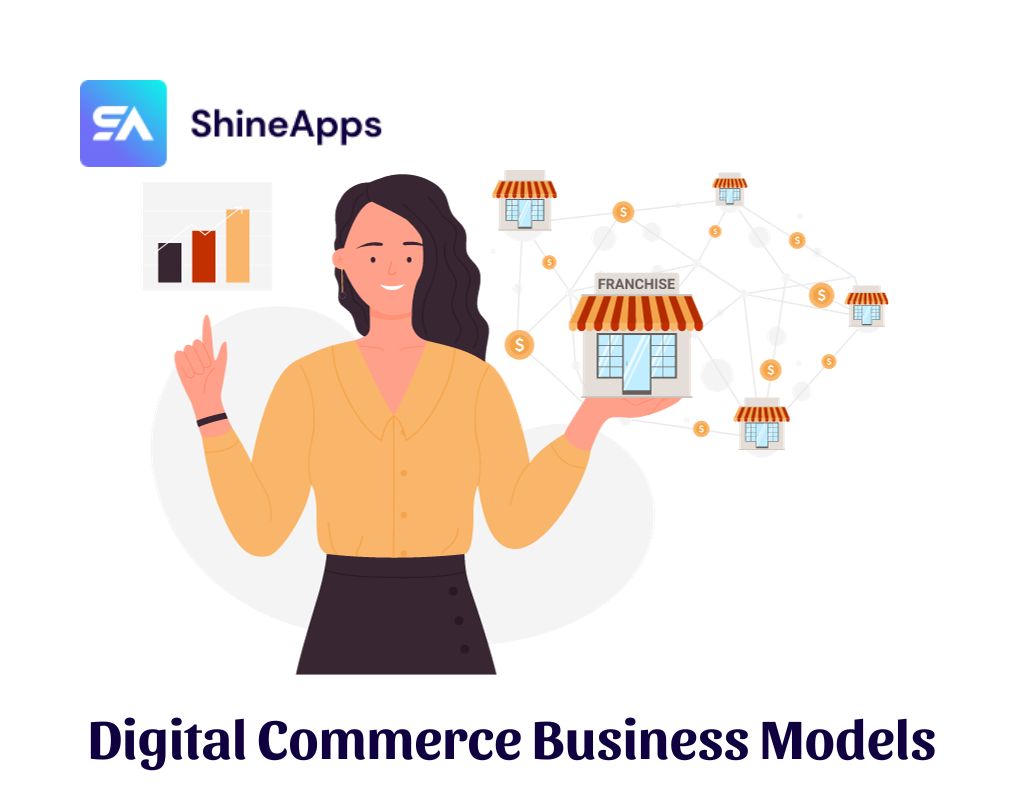
Digital commerce operates under several common business models:
B2B Model (Business to Business)
In this model, businesses sell products or services to other businesses. While these deals are typically larger in scale, they occur less frequently. Some B2B businesses offer monthly or annual subscription solutions that renew automatically. Examples include collaboration tools like Slack and automation software products such as HubSpot.
B2C Model (Business to Consumer)
B2C digital commerce involves businesses selling products or services directly to individual consumers for personal use. Common examples include smartphone apps that require payment, like those available in app stores.
C2C Model (Consumer to Consumer)
In this model, consumers sell products or services to other consumers through an online platform that facilitates these transactions. Etsy is a notable example, where digital products are sold with minimal platform involvement. Consumers can act as both sellers and buyers in C2C commerce.
C2B Model (Consumer to Business)
C2B digital commerce occurs when consumers provide value to businesses. For instance, on platforms like Amazon, consumers are encouraged to write reviews, which benefits businesses by generating more revenue. The value transfer goes from the consumer to the business, making it a C2B model.
These digital commerce business models cater to different market dynamics and play a significant role in shaping the online economy. Businesses often choose the model that best aligns with their target audience and offerings.
Digital commerce examples
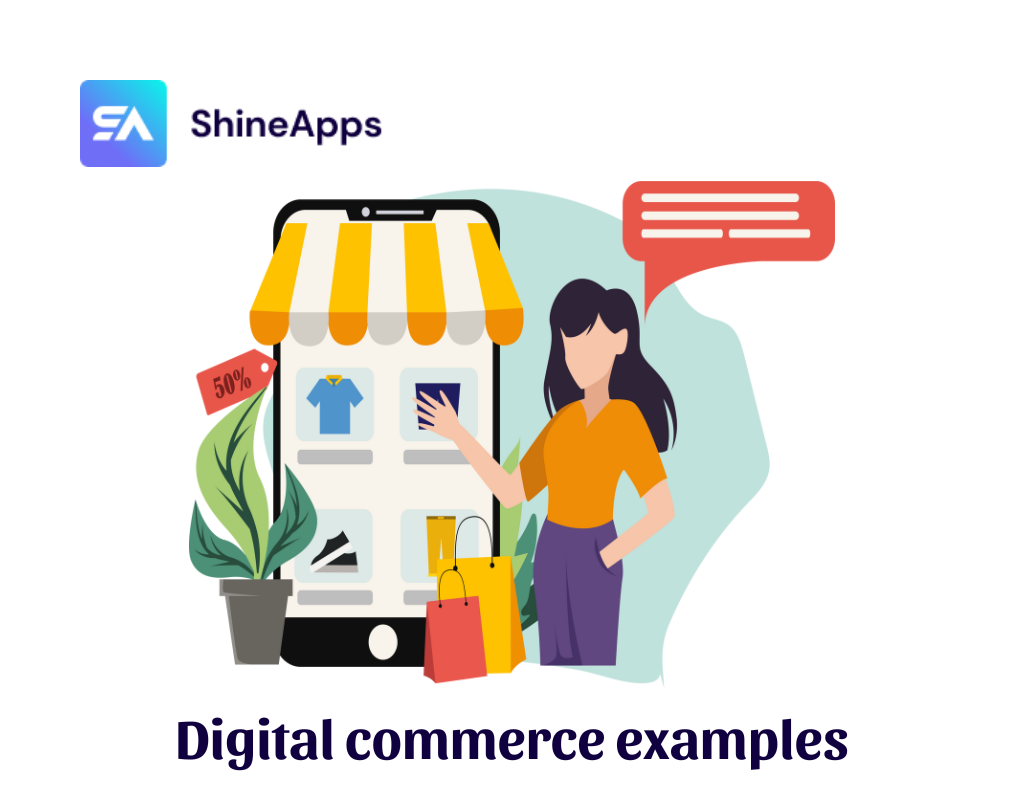
Digital commerce encompasses various online business activities, including:
Online Retail
Businesses can sell physical products, such as clothing, electronics, or home goods, through online stores. E-commerce platforms like Shopify make it easy to set up and manage these digital storefronts.
Digital Products
Intangible goods like ebooks, software, mobile apps, online courses, and digital subscriptions (e.g., streaming services) are sold online. Platforms like Gumroad, Teachable, and Udemy facilitate the sale of digital products.
Online Services
Service-based businesses, such as web design, graphic design, digital marketing, and consulting, can offer their expertise online. Platforms like Upwork and Fiverr connect service providers with clients seeking specific skills.
Online Marketplaces
Online marketplaces bring together buyers and sellers for a wide range of products. Examples include Amazon and eBay for physical goods and Etsy for handmade and vintage items. Envato Market is a marketplace for digital assets like website templates and design resources.
Digital commerce trends
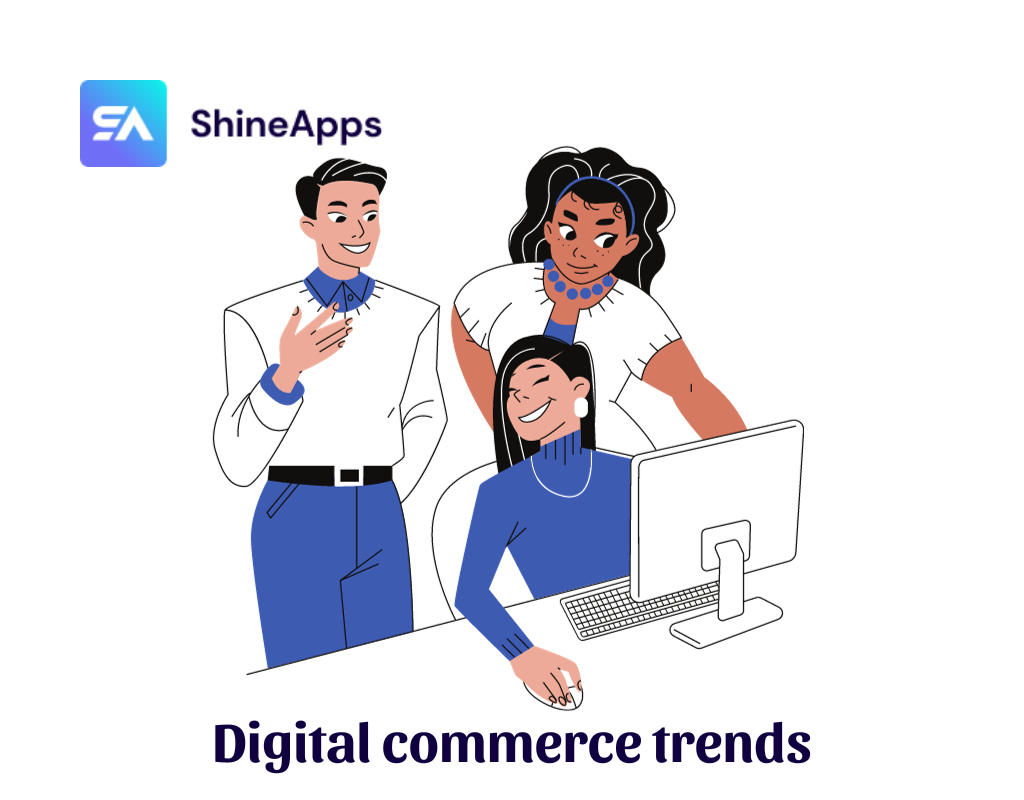
Digital commerce trends are constantly evolving in response to changes in technology, consumer behavior, and market dynamics. Below are some noteworthy digital commerce trends:
1. Personalization
The concept of personalization in digital commerce is all about tailoring the online shopping experience to meet the unique preferences and needs of each customer. Whether it’s recommending products based on past purchases, showing relevant content, or even customizing pricing, personalization is a game-changer.
Today, 88% of consumers say they are more likely to make a purchase from brands that provide personalized experiences, highlighting the growing importance of this trend.
2. Interactive Products
Augmented Reality (AR) and Virtual Reality (VR) are taking the online shopping experience to new heights. Retailers are increasingly leveraging these technologies to create immersive experiences for their customers.
For instance, online clothing stores are using AR to develop virtual fitting rooms, allowing customers to try on clothing virtually, which can reduce the uncertainty of buying online and improve customer satisfaction.
3. Inventory Control
Managing inventory efficiently is a persistent challenge for digital retailers. Some are adopting sophisticated inventory tracking systems to monitor product availability in physical stores nationwide.
This approach enables them to fulfill online customer orders from store supplies, eliminating the need for separate in-store and warehouse inventories, reducing costs, and improving supply chain efficiency. In contrast, e-commerce giants like Alibaba Express connect consumers directly with suppliers, eliminating the need for significant warehousing altogether.
4. Integrated Marketing
The proliferation of digital commerce channels has led to a fragmented customer experience. To address this challenge, integrated marketing is gaining momentum.
It involves unifying marketing strategies and creative efforts across all customer touchpoints, creating a cohesive digital experience that aligns with customer expectations in a diverse and ever-expanding digital world.
5. Automation
Automation is becoming increasingly popular as retailers seek to streamline operations and cut costs. By automating repetitive tasks related to inventory management, marketing campaigns, and customer support, businesses can focus their efforts on more critical aspects such as business growth and enhancing the customer experience.
6. API-Based Commerce
Headless commerce, a modern approach to digital commerce, decouples the front-end user experience from the back-end infrastructure.
This separation enables businesses to provide highly personalized and flexible customer experiences across various channels and devices. It empowers brands to adapt to changing customer preferences and maintain a competitive edge in the digital commerce ecosystem.
Challenges in Digital Commerce
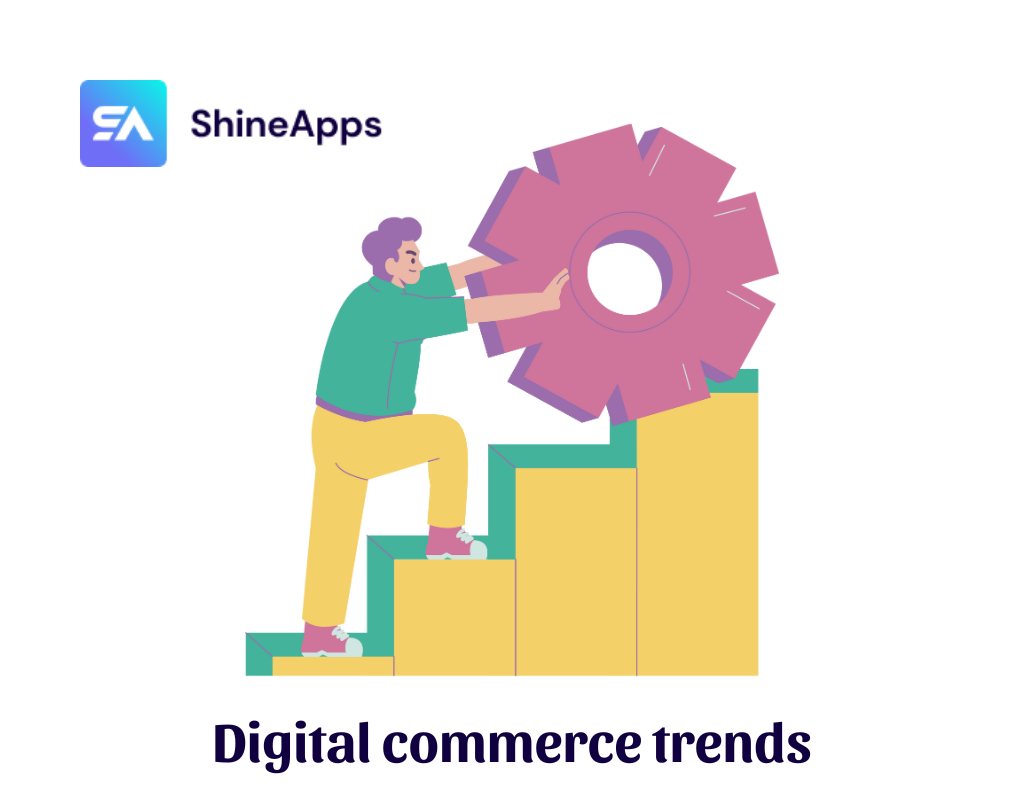
Digital commerce, while essential, has its challenges. One significant pitfall is the lack of direct consumer contact, which can reduce customers to mere statistics. It’s crucial for businesses to remember that customers are more than data points.
Successful businesses continually review their digital commerce strategies, use social listening to understand consumer sentiments and stay attuned to online trends. Regular review and monitoring are vital to prevent businesses from slowly declining as they embrace digital commerce.
The Bottom Line
In short, digital commerce is the driving force behind today’s retail and business landscape. It has revolutionized the way we shop, conduct business, and connect with customers. Understanding what digital commerce is and its models is essential for anyone who wants to thrive in the digital age. Implementing this digital transformation can lead to business growth, increased customer satisfaction, and enhanced competitive advantage in the market.



